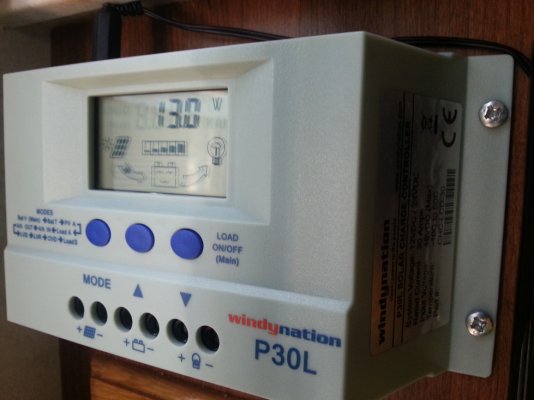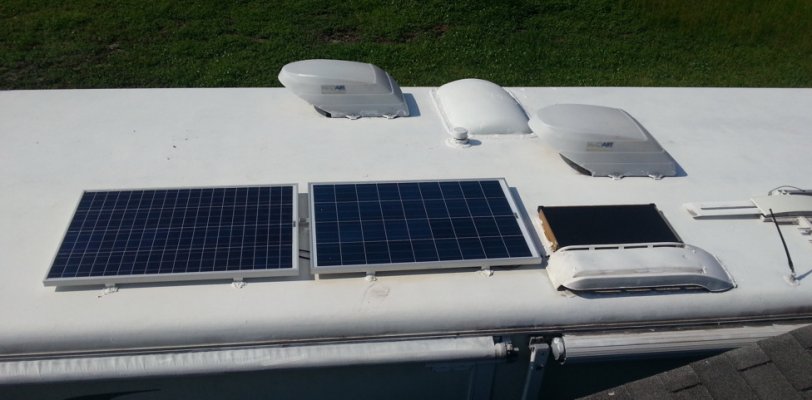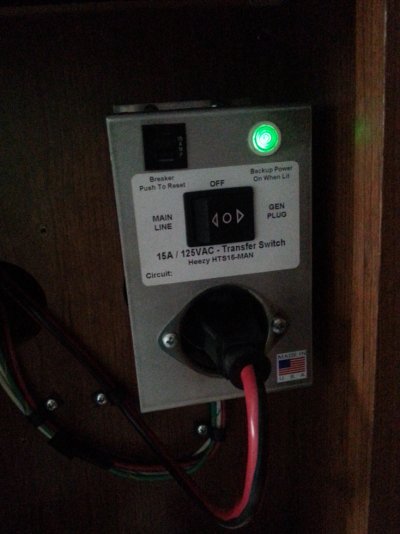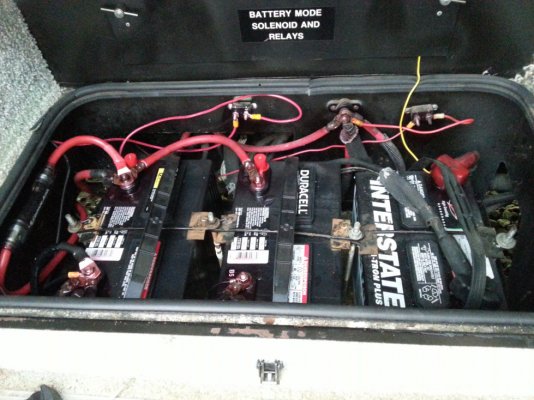Great thread. Thanks for all the great ideas folks!
I will be going FT in about 3 years in a TT and am planning on building a FT boondocking rig. My system will allow complete off-grid power independence. Such a system will be rather complex, heavy and expensive, but doable within my budget (weight and monetary). I will have both a 12v and a 48v battery bank. The 12v side of the house, consisting of 2, CG-2 golf cart type batteries or 2 Rolls S-550s will be used to power my slides, LED lighting, fridge board, water pump, etc. It will be recharged by a single 300-325 watt solar panel. My 48v side will consist of 8-GC-2s (to start) which will power a 48v DC mini-split 12,000 BTU heat pump (which has an EER of 21.42 - drawing only 11.5 amps for cooling) and a 2,000 watt AIMS PS inverter for my A/C needs. They will be recharged by 6, 300-325 watt solar panels. I particularly like the SUN high-efficiency 325 watt modules that Sun Electronics has for only 64 cents/watt for less than pallet quantities. These are light enough (at only 41 lbs each) to be moveable, if necessary. But with 2,100-2,275 watts on the roof, they should produce sufficient power for my needs just leaving them mounted flat.
Here's a couple links so you can see what I have in mind:
http://www.geinnovations.net/HSAC_Productline.html
http://sunelec.com/
I plan on using 2 controllers, a Tristar TS-MPPT-45 for the 48v side, and a Tracer 3215BN MPPT for the 12v system. I will use one monitor for both, the new Pentametric meter from Bogart Eng.
I should be able to construct the total system for around $6,500. ($7,400 with an EU2,000 Honda generator back-up) Though this sounds expensive, if I consider the savings in not just my power bill, but RV park/GC fees it should easily pay for itself very quickly in full-time use. If I estimate the average monthly GC rate of $400 plus a metered electric bill of $100, This $500/month savings would put the payback of only 15 months (less if I qualify for a federal subsidy at the time of purchase). The panels and hardware should last for my lifetime and the batteries should last 3 yrs or more. When my initial batteries finally expire, I'd like to go with some high-tech LiFEPo4 batteries to replace them if they drop sufficiently in price by then. If not, I will use this as an opportunity to upgrade my battery bank to better, more durable FLAs.
Chip
I will be going FT in about 3 years in a TT and am planning on building a FT boondocking rig. My system will allow complete off-grid power independence. Such a system will be rather complex, heavy and expensive, but doable within my budget (weight and monetary). I will have both a 12v and a 48v battery bank. The 12v side of the house, consisting of 2, CG-2 golf cart type batteries or 2 Rolls S-550s will be used to power my slides, LED lighting, fridge board, water pump, etc. It will be recharged by a single 300-325 watt solar panel. My 48v side will consist of 8-GC-2s (to start) which will power a 48v DC mini-split 12,000 BTU heat pump (which has an EER of 21.42 - drawing only 11.5 amps for cooling) and a 2,000 watt AIMS PS inverter for my A/C needs. They will be recharged by 6, 300-325 watt solar panels. I particularly like the SUN high-efficiency 325 watt modules that Sun Electronics has for only 64 cents/watt for less than pallet quantities. These are light enough (at only 41 lbs each) to be moveable, if necessary. But with 2,100-2,275 watts on the roof, they should produce sufficient power for my needs just leaving them mounted flat.
Here's a couple links so you can see what I have in mind:
http://www.geinnovations.net/HSAC_Productline.html
http://sunelec.com/
I plan on using 2 controllers, a Tristar TS-MPPT-45 for the 48v side, and a Tracer 3215BN MPPT for the 12v system. I will use one monitor for both, the new Pentametric meter from Bogart Eng.
I should be able to construct the total system for around $6,500. ($7,400 with an EU2,000 Honda generator back-up) Though this sounds expensive, if I consider the savings in not just my power bill, but RV park/GC fees it should easily pay for itself very quickly in full-time use. If I estimate the average monthly GC rate of $400 plus a metered electric bill of $100, This $500/month savings would put the payback of only 15 months (less if I qualify for a federal subsidy at the time of purchase). The panels and hardware should last for my lifetime and the batteries should last 3 yrs or more. When my initial batteries finally expire, I'd like to go with some high-tech LiFEPo4 batteries to replace them if they drop sufficiently in price by then. If not, I will use this as an opportunity to upgrade my battery bank to better, more durable FLAs.
Chip





![DSC00753_zpse330e231[1].jpg](/data/attachments/37/37702-2f1abf6ff0d1100c6d4dfd01f58978ea.jpg)